The Sota Sound Inventions Quasar Turntable

Old Company, New Tricks
 As any regular reader of my columns knows, my 1987 Sota Star-Sapphire turntable has been at the heart of my audio system for the better part of two decades. I bought it used for a grand with an AudioQuest PT6 arm already installed from a fellow at MIT, and this turntable is still, hands down, the best hi-fi purchase I’ve ever made. The company’s basic signature design, a four-point suspended chassis, massive fifteen-pound platter, and optional vacuum hold down, were originally developed by David Fletcher in the late 1970s and have now been in continuous production – with significant improvements and refinements over the years, of course – for over forty years. The sprung Sota turntables are undisputed audiophile classics. That unusual product durability places Sota’s Heritage and Statement series turntables – Sapphire, Nova, and Cosmos – in a small group of audio products, along with Klipsch Horns, Tannoy’s concentric drivers, and the Technics SL-1200 series turntables, whose original designs were so good that they have prospered on the same basic principles for decades. My Star-Sapphire, which has been updated at the factory a couple of times, is still a great turntable by any modern measure.
As any regular reader of my columns knows, my 1987 Sota Star-Sapphire turntable has been at the heart of my audio system for the better part of two decades. I bought it used for a grand with an AudioQuest PT6 arm already installed from a fellow at MIT, and this turntable is still, hands down, the best hi-fi purchase I’ve ever made. The company’s basic signature design, a four-point suspended chassis, massive fifteen-pound platter, and optional vacuum hold down, were originally developed by David Fletcher in the late 1970s and have now been in continuous production – with significant improvements and refinements over the years, of course – for over forty years. The sprung Sota turntables are undisputed audiophile classics. That unusual product durability places Sota’s Heritage and Statement series turntables – Sapphire, Nova, and Cosmos – in a small group of audio products, along with Klipsch Horns, Tannoy’s concentric drivers, and the Technics SL-1200 series turntables, whose original designs were so good that they have prospered on the same basic principles for decades. My Star-Sapphire, which has been updated at the factory a couple of times, is still a great turntable by any modern measure.
Sota ownership is different from most audio company interactions. You can call the factory in Delevan, Wisconsin, during business hours and actually get someone on the phone who is intimately knowledgeable about their turntables. Hell, if you drove there and knocked on the door, they’d probably let you in (though it’s rude to pop by uninvited). It’s a small, privately owned business, and there are some personal interactions that come with that. If you do call, chances are you’ll get Donna Bodinet on the line, and Cristan Griego, the new company owner, is also accessible (I say ‘new,’ but he’s probably been there five years or so). They’ll troubleshoot your table, work with you on upgrades, or help you choose a new model (the latter is Donna’s forte). It’s an altogether different, old-school way of doing business.
 In addition to the big, sprung tables, Sota has always offered simpler tables with fixed plinths priced more accessibly while still maintaining high audio standards. In fact, it was one of these tables that led me to the brand in the first place. My friend, Emory’s Comet, is either almost as old or older than my Star-Sapphire – we’ve never sorted that out – inspired me to get my own Sota. Once I’d felt the weight of the switch gear and the solidity of the entire thing, the Thorens TD-160 Super I was using at the time became entirely inadequate.
In addition to the big, sprung tables, Sota has always offered simpler tables with fixed plinths priced more accessibly while still maintaining high audio standards. In fact, it was one of these tables that led me to the brand in the first place. My friend, Emory’s Comet, is either almost as old or older than my Star-Sapphire – we’ve never sorted that out – inspired me to get my own Sota. Once I’d felt the weight of the switch gear and the solidity of the entire thing, the Thorens TD-160 Super I was using at the time became entirely inadequate.
Christan has been working hard the last few years to incorporate serious updates to all of the existing models. But the subject of this review, the Sota Quasar, is an all-new design. It’s a solid plinth, belt-drive, unsuspended model that is now the peak of Sota’s four-model Urban Series.
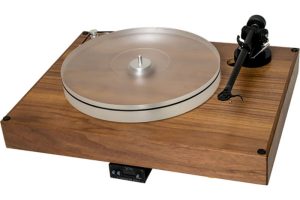
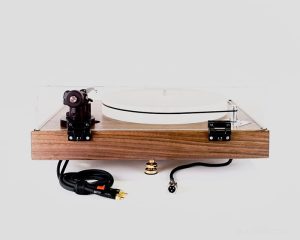
The Quasar Turntable
The Quasar is a relatively simple turntable: a plinth, motor, bearing, and platter with some bits for controlling it tucked underneath. With sprung turntables being a bit of a rarity these days, the Quasar is a far more mainstream design. As always though, the devil is in the details on materials, engineering, and overall build quality, and getting it done right at a reasonable price is the killer challenge. The Quasar is priced at what I think is a reasonable $2,995 with no arm, and the addition of the Roadrunner tachometer adds an extra $525. That’s not an especially expensive table in today’s marketplace, but there is a lot of quality competition at this price point.
This particular table arrived from Wisconsin with a Rega RB330 tonearm and a Grado Master3 low-output Moving Iron cartridge already installed, which I thought was a bold move considering UPS’s penchant for destroying…well, anything. I’m omitting both the arm and cartridge from the pricing of the table on the assumption that, while Sota sells and frequently packages the table with this arm, many buyers will choose their own ancillary hardware. In addition, I did not use the Grado cartridge for the review.
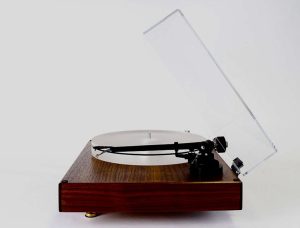
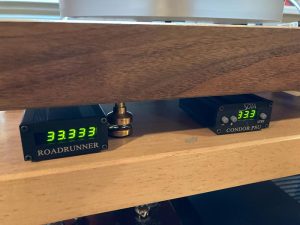
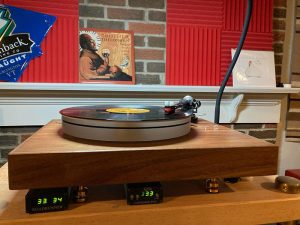
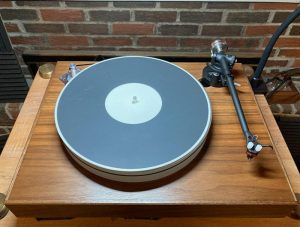
The Good Stuff
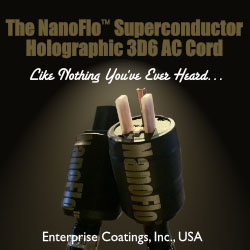 Starting at the top: The Quasar features a substantial, inch-and-a-half thick frosted acrylic platter. Acrylic is not a new material in turntable design, but it does have a reputation for paying dividends in low background noise as well as potentially eliminating the need for a platter mat (A question that will generate as many online fights as whether expensive cables matter). The platter is a sensible 11.5 inches in diameter, allowing the fat lip of most records to clear the edge so the record can make solid contact with the surface.
Starting at the top: The Quasar features a substantial, inch-and-a-half thick frosted acrylic platter. Acrylic is not a new material in turntable design, but it does have a reputation for paying dividends in low background noise as well as potentially eliminating the need for a platter mat (A question that will generate as many online fights as whether expensive cables matter). The platter is a sensible 11.5 inches in diameter, allowing the fat lip of most records to clear the edge so the record can make solid contact with the surface.
Moving down, the bearing is a stainless-steel ball making contact with Sota’s once ubiquitous sapphire thrust plate. It’s good to see the sapphire in use, as it’s been largely replaced in the Heritage and Statement tables with a magnetic opposition bearing. The bearing also features silicone-impregnated bronze bushings, a material used in race car engines, which, according to Sota, yields benefits in speed stability. The bearing assembly comes pre-assembled and oiled from the factory, so other than installing the platter, there’s nothing to do to prep it for service. With the table leveled and the belt removed, the platter spun for a good long time with just a hand push, that age-old, entirely unscientific, and probably worthless test of any turntable bearing, but the one we all do anyway.
The platter and bearing are installed on a walnut veneered plinth of medium-density fiberboard, another material valued for its damping qualities in turntables. The plinth is solid from top to bottom, and Sota specifically noted that they manufacture them in-house. Unlike many manufacturers that simply assemble parts they’ve ordered from other vendors, Sota builds their own. Interestingly, although the review sample came with a fixed Rega arm base, the hole in the plinth is elongated and would also readily accept a sliding SME mount. I thought that might have been specific to the review sample, but the table on Sota’s website is also drilled this way. That would certainly facilitate using a variety of tonearm mounting bases.
Driving the platter is Sota’s “ultimate 3-phase synchronous motor”, designed for stable speed and low vibration. It’s a brushless BLDC unit with bearings on both the top and bottom of the housing. Phoenix Engineering designed the controller and tachometer around the motor, and as we’ll get back to shortly, the speed stability is exceptional.
Below the platter, the Quasar rests on a really nice set of three solid brass cones with cups to receive the points. They certainly cost more than the rubber feet you’d find on most tables in this price range, and they’re a nice, high-quality detail. In addition to basic height adjustment, these feet also have a secondary nut to lock the assembly in place, preventing the table from drifting out of level. I love well-executed details like this. It suggests the manufacturer put some effort into it. Well played.
Now crawling around under the hood, as it were, the Quasar comes with a beefy AC main power supply and the Phoenix Engineering Condor controller. This review sample also came with the optional RoadRunner tachometer, which controls platter speed in real time to thousandths (!) of an RPM. It takes a few seconds for the speed to stabilize as the system compensates for the drag when you drop the needle, but when playing, the observed speed typically ran between 33.331 and 33.336 RPM, with 45 RPM playback yielding similar results. That is exceptionally good speed stability by almost any measure, especially on a belt-drive turntable. The Condor also doubles as the control module for the table – on/off, speed selection, and trim. There are no actual controls on the turntable itself.
Setup
If your experience with Sotas involves bouncing, sprung platters, carefully pouring lead shot into a cup to balance the suspension, and overall mass that requires a good friend and offerings of beer to help lift it into place, well, forget all of that. The Quasar turntable is decidedly more compact and significantly easier to work with.
Setup was a snap. Set the plinth where you want it, level it with those excellent locking brass feet, lower the platter onto the spindle, install the belt, and that’s it. Basic placement took ten minutes and could not have been easier, especially compared to setting up my Star-Sapphire. I periodically placed a small torpedo level on the plinth to re-verify the level, and it never needed adjustment during the review.
Cartridge Selection
As I mentioned, though Sota was kind enough to send a Grado cartridge with the Quasar, I chose not to use it. For a review, there should be a familiar piece of equipment included for reference.
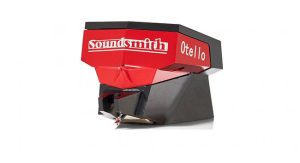 The cartridge I did use was my Soundsmith Otello. When I reviewed it, I wrote that I found the moving-iron (“Fixed Coil” is Peter Ledermann’s preferred term) Otello to be more successful with smaller-scale jazz and popular music than with large-scale orchestral works. Its strengths, vibrancy, humanity, and warmth were best reflected in my system with simpler instrumental arrangements. The cartridge presented vocals – male or female – with a rich delivery that enhanced many performances. At the $600 price point, it was not the last word in detail, and any air in space was limited, but on the whole, it was a most agreeable musical partner. It is my budget reference.
The cartridge I did use was my Soundsmith Otello. When I reviewed it, I wrote that I found the moving-iron (“Fixed Coil” is Peter Ledermann’s preferred term) Otello to be more successful with smaller-scale jazz and popular music than with large-scale orchestral works. Its strengths, vibrancy, humanity, and warmth were best reflected in my system with simpler instrumental arrangements. The cartridge presented vocals – male or female – with a rich delivery that enhanced many performances. At the $600 price point, it was not the last word in detail, and any air in space was limited, but on the whole, it was a most agreeable musical partner. It is my budget reference.
On paper, the low-mass Rega arm and the high-compliance Otello seemed like a good fit, and indeed, they were complimentary. The pickup sounded better on this arm than mounted in the SME 3009 that usually plays host. I’d have liked to have fine-tuned the VTF, as there was a hair more top-end bite than I like, but alas, Rega seems to disapprove of such tampering. Arm height is not adjustable. In certain circumstances, I compensated for the lack of VTF adjustment by adding a 3mm Herbie’s Way Excellent platter mat. I considered swapping the entire tonearm, but that would have required drilling additional screw holes in the plinth. I didn’t want to make a mess of a loaner, so I stood pat and did the review with the Rega as mounted.
This setup played either through the MM section of my Lyric phono stage or the built-in p-stage in my Cary preamp, worked out well.
Listening (Finally)
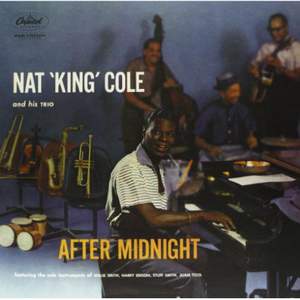 The combination of the Quasar table, Rega arm, and Soundsmith Otello cartridge is – first and foremost – a pleasurable vinyl spinning combination. One of my favorite albums, Nat Cole’s “After Midnight” (Pure Pleasure reissue), exhibits everything that was great about Capital Records’ production values in the 1950s: mellifluous warmth and extraordinary tone colors and textures. Cole’s voice is captured at its smokey finest, with chesty volume and his precise flow and timing. The rest of the music is right there with him. The guitar of John Collins has a fat, round tone that compliments the vocals perfectly. The horns of Willie Smith (alto sax, not “The Lion”) and Sweets Edison compliment that late-night vibe so perfectly that it’s hard to conceive that neither player was part of Cole’s regular band. Played on the Quasar, that sublime Capital sound rang true, with a large and tall soundstage with this monaural record. There was also a great tonal density to the music, with very little bloat or feathery edges. Stuff Smith’s violin was clean and steady, a byproduct of the Quasar’s superior speed stability.
The combination of the Quasar table, Rega arm, and Soundsmith Otello cartridge is – first and foremost – a pleasurable vinyl spinning combination. One of my favorite albums, Nat Cole’s “After Midnight” (Pure Pleasure reissue), exhibits everything that was great about Capital Records’ production values in the 1950s: mellifluous warmth and extraordinary tone colors and textures. Cole’s voice is captured at its smokey finest, with chesty volume and his precise flow and timing. The rest of the music is right there with him. The guitar of John Collins has a fat, round tone that compliments the vocals perfectly. The horns of Willie Smith (alto sax, not “The Lion”) and Sweets Edison compliment that late-night vibe so perfectly that it’s hard to conceive that neither player was part of Cole’s regular band. Played on the Quasar, that sublime Capital sound rang true, with a large and tall soundstage with this monaural record. There was also a great tonal density to the music, with very little bloat or feathery edges. Stuff Smith’s violin was clean and steady, a byproduct of the Quasar’s superior speed stability.
 Moving on to a more modern, less forgiving recording is Viking Olafsson’s 2021 Deutsche Grammophon release “Mozart & Contemporaries.” With its dynamic range and subtle tonal gradations, solo piano is among the most difficult instruments to capture properly. With this recording, the Quasar, Rega, Soundsmith combination acquitted itself well, though this was a record where the platter mat was helpful in compensating for the lack of VTF adjustment on the arm. First, of paramount performance to a piano recording is speed stability, without which the piano will exhibit odd, obvious vibrato, essentially distortion, that does not exist in a natural performance space. The Quasar nailed the required stability with direct-drive precision, obviously better, in fact, than my own Star-Sapphire (my table has an older two-phase motor, and it does without the Phoenix engineering bits). Riding that foundation, the music was rendered with great scale and a tangible sense of depth, suggesting a listening seat about ten rows back. This is not a recording that places you in a chair right next to the piano. The overall sound was refined and detailed, though not as detailed as my Star-Sapphire, with a far more expensive arm and cartridge. Most importantly, it was musically satisfying in every regard.
Moving on to a more modern, less forgiving recording is Viking Olafsson’s 2021 Deutsche Grammophon release “Mozart & Contemporaries.” With its dynamic range and subtle tonal gradations, solo piano is among the most difficult instruments to capture properly. With this recording, the Quasar, Rega, Soundsmith combination acquitted itself well, though this was a record where the platter mat was helpful in compensating for the lack of VTF adjustment on the arm. First, of paramount performance to a piano recording is speed stability, without which the piano will exhibit odd, obvious vibrato, essentially distortion, that does not exist in a natural performance space. The Quasar nailed the required stability with direct-drive precision, obviously better, in fact, than my own Star-Sapphire (my table has an older two-phase motor, and it does without the Phoenix engineering bits). Riding that foundation, the music was rendered with great scale and a tangible sense of depth, suggesting a listening seat about ten rows back. This is not a recording that places you in a chair right next to the piano. The overall sound was refined and detailed, though not as detailed as my Star-Sapphire, with a far more expensive arm and cartridge. Most importantly, it was musically satisfying in every regard.
 A recent album in heavy rotation here at Le Chateau Greg (If you give it a grand name maybe no one will notice it’s just a 1970 split-entry ranch in Pittsburgh) is the Mo-Fi two LP, 33rpm pressing of Jerry Garcia/David Grisman. I am fifty-four years old, and the Grateful Dead are still following me around. This stripped-down recording is just Jerry singing, accompanying himself with guitar, Grisham’s mandolin, as well as bass, and a little percussion and violin thrown in periodically. It’s a brilliant, simple recording. No one ever accused Garcia of having an especially powerful voice. It’s reedy and thin but also absolutely distinctive and, to me and millions of Heads, charming: A voice perfectly suited to his particular specialty of roots Americana, blues, and folk storytelling. Once again, the Quasar’s iron-fisted speed stability placed everything perfectly in the soundstage, but beyond that, it gave body to the acoustic instruments – weight and resonance to the acoustic guitar and woody twang to the mandolin where a lesser setup might have left a hard, jangly tinkle. All of it, instruments, vocals, and rhythm, was delivered with wonderful, natural, in-the-room-with-you immediacy that we all seek in a great hi-fi experience. Jerry Garcia/David Grisham is a great record under almost any circumstance, but it was brilliant on the Quasar.
A recent album in heavy rotation here at Le Chateau Greg (If you give it a grand name maybe no one will notice it’s just a 1970 split-entry ranch in Pittsburgh) is the Mo-Fi two LP, 33rpm pressing of Jerry Garcia/David Grisman. I am fifty-four years old, and the Grateful Dead are still following me around. This stripped-down recording is just Jerry singing, accompanying himself with guitar, Grisham’s mandolin, as well as bass, and a little percussion and violin thrown in periodically. It’s a brilliant, simple recording. No one ever accused Garcia of having an especially powerful voice. It’s reedy and thin but also absolutely distinctive and, to me and millions of Heads, charming: A voice perfectly suited to his particular specialty of roots Americana, blues, and folk storytelling. Once again, the Quasar’s iron-fisted speed stability placed everything perfectly in the soundstage, but beyond that, it gave body to the acoustic instruments – weight and resonance to the acoustic guitar and woody twang to the mandolin where a lesser setup might have left a hard, jangly tinkle. All of it, instruments, vocals, and rhythm, was delivered with wonderful, natural, in-the-room-with-you immediacy that we all seek in a great hi-fi experience. Jerry Garcia/David Grisham is a great record under almost any circumstance, but it was brilliant on the Quasar.
Quibbles?
I can’t argue with the sonic performance of the Quasar. It is an excellent turntable. But I had a couple of minor notes, though nothing that actually detracted from the listening experience.
The Quasar as set up did not have the bass impact that I regularly get out of my Star-Sapphire. Bass wasn’t missing; it just wasn’t as impactful or fully realized. In fairness, this is one of the areas where the sapphire, with its fifteen-pound platter, is superlative, so it’s not a surprise that the Quasar wasn’t quite there.
Also, with the external power supply, the controller, and the tachometer, this turntable has a lot of wires. They’re not obtrusive once they’re set up, but a single box with all of those pieces integrated would be a friendlier setup. Ergonomically, simpler is always better.
Conclusion
The Sota Quasar, paired with the Condor controller and Roadrunner tachometer, is the most speed-stable turntable I’ve ever heard in my house, including my direct drive Tech-12. From that, stability flows soundstage accuracy, properly reproduced instrument timbres, stable tonal colors, and exceptional rhythm, pace, and timing. Mounted with the Rega RB 330 arm and my own Soundsmith Otello, the Quasar was a real pleasure to listen to. Acoustic performances had a natural presence that really drove home the musical event. And though I didn’t discuss it in the body of this article, big thumpers like Parliament’s Mothership Connection were also well served. This is the kind of product I love: a relatively simple turntable at a reasonable price point that is really well-engineered with some genuine technical advantages in motor control.
Most importantly, the Quasar was never less than musically satisfying. The Sota Quasar is an all-round excellent turntable which, by today’s standards, represents a pretty good value. Well done, and an easy recommendation.


Specifications:
Base Price: $2,995
Roadrunner Tachometer upgrade: $525
Specifications
Ultimate 3-phase brushless AC synchronous low-vibration motor.
Ultimate Condor digital power source
33-1/3, 45, and 78 RPM operation.
1.5-inch clear acrylic platter
Hand-lapped steel bearing shaft in 360 brass bearing cup
Two 1/4-inch walnut veneered MDF plinths with interchangeable tonearm bases.
Sota lifetime trade-in guarantee.
Website: https://sotaturntables.com/
Greg’s Associated Equipment:
Analog Front End
SOTA Sapphire turntable w/Audio Creative Groovemaster III Tonearm
Rek-O-Kut T12h turntable w/Karmadon 12” viscous damped unipivot tonearm
Technics SL-1200 M3D wSME 3009 Improved Fixed Headshell
Phono Cartridges
Lyra Delos, Moving Coil
Soundsmith Otello, Moving Iron
Miyajima Spirit Mono, Moving Coil
Audio-Technica OC/9-III, Moving Coil
Audio-Technica AT33Sa, Moving Coil
Digital Front End
Digi-what?!!
Amplification
Cary SLP-98P preamp w/ phono stage
Parasound JC5 Stereo Amplifier
Aurorasound SP-03H step-up transformer
Lyric Audio PS-10 MC/MM phono stage
Loudspeakers
Verity Audio Fidelity Encore
Magnepan MG-IIa
Cabling
Finley Audio Cirrus interconnects, speaker, and power cables.
A variety of other wires from Nordost, Cullen, AudioQuest and MIT.
Accessories
AudioQuest Niagara 1200 power conditioner
Tice Box power conditioner
Nordost Sort Kones AC vibration dampers
Mapleshade Audio Rack
Stereo Times Masthead
Publisher/Founder
Clement Perry
Editor
Dave Thomas
Senior Editors
Frank Alles, Mike Girardi, Russell Lichter, Terry London, Moreno Mitchell, Paul Szabady, Bill Wells, Mike Wright, and Stephen Yan,
Current Contributors
David Abramson, Tim Barrall, Dave Allison, Ron Cook, Lewis Dardick, John Hoffman, Dan Secula, Don Shaulis, Greg Simmons, Eric Teh, Greg Voth, Richard Willie, Ed Van Winkle, Rob Dockery, Richard Doran, and Daveed Turek
Site Management Clement Perry
Ad Designer: Martin Perry



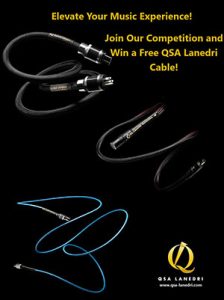
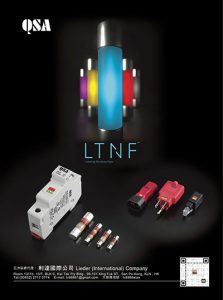


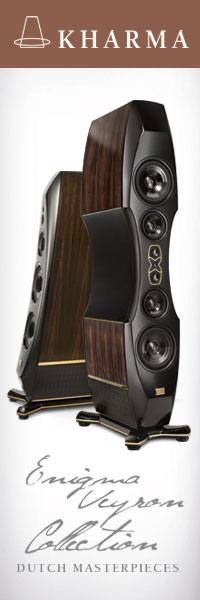
Be the first to comment on: The Sota Sound Inventions Quasar Turntable